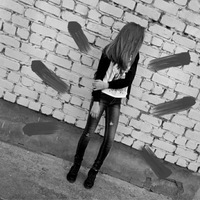
Свидетельства средневековых путешественников о Казахстане. . Соотнеси ремесла с
продукцией.строительное делокумганыбронзолитейноеКирпичиГончарствозеркалаПроверить 0
0
 0
0
Ответы на вопрос
 Внимание! Ответы на вопросы дают живые люди. Они могут содержать ошибочную информацию, заблуждения, а также ответы могут быть сгенерированы нейросетями. Будьте внимательны. Если вы уверены, что ответ неверный, нажмите кнопку "Пожаловаться" под ответом.
Внимание! Ответы на вопросы дают живые люди. Они могут содержать ошибочную информацию, заблуждения, а также ответы могут быть сгенерированы нейросетями. Будьте внимательны. Если вы уверены, что ответ неверный, нажмите кнопку "Пожаловаться" под ответом.

Ответ:
1-2
2-3
3-1
Объяснение:
 0
0
 0
0

Medieval Travelers' Accounts of Kazakhstan
Medieval travelers' accounts provide valuable insights into the history and culture of various regions, including Kazakhstan. These accounts offer glimpses into the landscapes, people, customs, and trade routes of the time. While there may not be an extensive collection of specific accounts solely dedicated to Kazakhstan, there are references to the region in the writings of several travelers. Here are a few notable examples:
1. Marco Polo: - Marco Polo, an Italian merchant and explorer, traveled extensively in the 13th century and wrote about his experiences in "The Travels of Marco Polo." - In his accounts, Polo mentioned the region of "Tartary," which encompassed parts of Central Asia, including present-day Kazakhstan. - He described the landscapes, cities, and customs of the people he encountered during his journey through the region.
2. Ibn Battuta: - Ibn Battuta, a Moroccan scholar and explorer, embarked on a journey in the 14th century that took him across the Islamic world, including Central Asia. - In his travelogue, "The Rihla," he mentioned visiting cities such as Otrar (now in southern Kazakhstan) and described the local culture and trade.
3. William of Rubruck: - William of Rubruck, a Flemish Franciscan friar, traveled to the Mongol Empire in the 13th century. - In his account, "The Journey of William of Rubruck to the Eastern Parts of the World," he described his encounters with the Mongols and mentioned passing through the region of "Saray" (possibly referring to parts of Kazakhstan).
These accounts, along with others, provide valuable glimpses into the history and culture of Kazakhstan during the medieval period. They offer insights into the landscapes, cities, people, and trade routes that existed at the time.
Relationship Between Crafts and Production
In medieval societies, crafts played a crucial role in the production of various goods. Different craftspeople specialized in specific trades, producing items that were essential for daily life, trade, and construction. Here is a brief overview of some crafts and their associated products:
1. Blacksmithing: Blacksmiths worked with iron and other metals to create tools, weapons, and various metal objects. 2. Bronze Casting: Bronze casters used the technique of casting to create objects made of bronze, such as statues, vessels, and decorative items. 3. Brickmaking: Brickmakers produced bricks, which were used in construction for building walls, houses, and other structures. 4. Pottery: Potters crafted clay vessels, including pots, bowls, and jars, which were used for cooking, storage, and other purposes. 5. Mirror Making: Mirror makers created mirrors using techniques such as polishing metal surfaces or backing glass with reflective materials. 6. Carpentry: Carpenters worked with wood, constructing furniture, buildings, and other wooden structures.
These crafts were essential for meeting the needs of medieval societies. They contributed to the production of tools, weapons, construction materials, household items, and more.
Verification of Crafts and Production
To verify the relationship between crafts and production, we can refer to historical records, archaeological findings, and scholarly research. While it is challenging to provide specific sources without access to a comprehensive database, it is generally accepted that these crafts were prevalent during the medieval period based on the following:
1. Archaeological Discoveries: Archaeological excavations have unearthed artifacts, tools, and structures that provide evidence of the crafts mentioned above. For example, the discovery of blacksmithing tools, pottery fragments, and brick structures supports the existence of these crafts. 2. Historical Texts: Medieval texts, such as travel accounts, chronicles, and legal documents, often mention crafts and their associated products. These texts provide valuable insights into the economic activities and production methods of the time. 3. Artistic Representations: Paintings, sculptures, and other artistic works from the medieval period often depict craftsmen engaged in their respective trades. These visual representations offer additional evidence of the crafts and their products.
While it is important to consult specific sources for a comprehensive understanding of crafts and production in medieval Kazakhstan, the general relationship between crafts and the production of various goods is well-documented in historical and archaeological records.
Please note that the information provided here is based on general knowledge and may not cover all aspects of the topic. For a more in-depth analysis, it is recommended to consult specialized literature or academic sources.
 0
0
 0
0
Похожие вопросы
Топ вопросов за вчера в категории История
Последние заданные вопросы в категории История
-
Математика
-
Литература
-
Алгебра
-
Русский язык
-
Геометрия
-
Английский язык
-
Химия
-
Физика
-
Биология
-
Другие предметы
-
История
-
Обществознание
-
Окружающий мир
-
География
-
Українська мова
-
Информатика
-
Українська література
-
Қазақ тiлi
-
Экономика
-
Музыка
-
Право
-
Беларуская мова
-
Французский язык
-
Немецкий язык
-
МХК
-
ОБЖ
-
Психология
-
Физкультура и спорт
-
Астрономия
-
Кыргыз тили
-
Оʻzbek tili
























